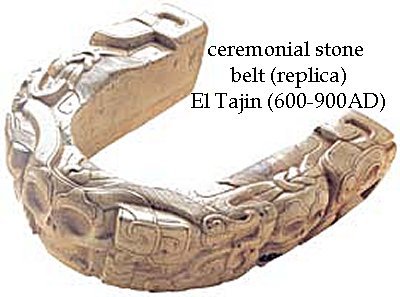Millennia Old Ceremonial Stone Belt And Maya Pok-A-Tok Ball Game
A. Sutherland - AncientPages.com - This fascinating artifact, which is displayed in the Mexican gallery of the British Museum, resembles a giant stone horseshoe.
It weighs almost 40 kilos (90 lbs; it is approximately 40 centimeters (15 inches) long and about 12 centimeters (4 inches) thick, and is made of a very beautiful green-grey speckled stone.
It is a ceremonial stone belt, as old as Pok-A-Tok, a ball game that ancient Maya most probably inherited from the Olmecs. Pok-A-Tok was played since at least 1,400 BC by the pre-Columbian peoples of ancient Mesoamerica. Known among the Aztecs as “tlachtli”, Pok-A-Tok was an important part of their political and religious festivals.
Its purpose has long remained a puzzle. It was not a typical yoke for draught animals or carthorses (as it was initially thought) because there were no such horses or other draught animals in Central America until the Spaniards brought them from Europe in the sixteenth century.
According to Michael Whittington, an expert on these ancient ball games, these heavy, yoke-like stone belts were probably worn as part of the ritual ceremonies at the beginning of the game and for a very brief time. Worn during the games, they would significantly slow down a player’s competition capabilities such as maneuverability.
Ceremonial stone belts are representations of represent the padded belts made of leather, padded cloth or other textiles and worn by players to protect their hips. Other protection made of jaguar skin or deer) was for the head, knees, hips and elbows.
When the Spaniards arrived they were amazed by the ball that the game was played with, because it was made of rubber, a substance unknown to Europeans.
The very first view of a bouncing ball, a round object seemingly defying gravity and shooting around in random directions, must have been extremely perplexing.
A relief of the Crown showing a scene from the Mesoamerican Ball Game. Image credit: Adrian Hernandez - CC BY-SA 4.0
“They call the material of this ball hule [rubber] … jumping and bouncing are its qualities, upward and downward, to and fro. It can exhaust the pursuer running after it before he can catch up with it…” wrote the Spanish after he observed the game.
Pre-Columbian ball courts have been found in the center of almost every Maya city, throughout Mesoamerica, as for example at Copán, as far south as modern Nicaragua, and possibly as far north as what is now the U.S. state of Arizona.
In some modern form and with slightly varying rules, the ball game tradition has survived through time until today in many places throughout Mesoamerica. One rule, however, has remained unchanged: the game was played on an I-shaped court, with rings set 20 to 30 feet off the ground.
One of the Ball Courts of the Mayan ruins in Coba, Mexico. Image credit: Wikipedia
Ball games were spectacular and dangerous in ancient Central America. In Pok-A-Tok, captives were forced to play the game for their lives. It was not easy to stay alive in this game. The aim was to keep the ball in the air and finally to land it in the opponents’ end of the court.
The losers became sacrificial victims and faced torture and execution immediately following the competition.
Even if played as a sport and for fun, there was always a team of losers and at least, their captain was traditionally sacrificed to the gods.
To the game, it used an 8- inch (or more) ball of solid baked rubber (at least eight times a soccer ball). It was heavy and it could weigh from 3 or 4 kilos (8 lbs) to almost 15 kilos (30 lbs).
The number of players ("Pitzhil") varied between 2 and 5 in each team.
The players had only one desire: to get the ball through a narrow, stone ring placed on the court wall, often as high up as 20 feet from the ground (or onto a marker).
They used only shoulders, heads, elbows, wrists, and hips but never – hands.
Symbolic Meaning
For the Maya, the ball represented the Sun, the Moon, or planets and the court was the cosmos.
Pok-A-Tok was considered the sacred game of the gods played on Earth and was not just a competitive sport.
It held a special place in the belief system of the ancient Central Americans and symbolized a mythical struggle of life, death, war, and sacrifice. The ball game was a ceremony dedicated to the memory of the ancestors and linked to agriculture and calendar cycles.
The ball courts were considered entrances to the underworld. The biggest ball court of all in Mesoamerica - 545 feet long and 225 feet wide – is located among the ruins of Chichén Itzá in Mexico's Yucatán peninsula.
For the Aztec, for example, the game symbolized reenactment of the daily trial of the Sun rising after being born again from nighttime of fighting the underworld.
Written by – A. Sutherland AncientPages.com Staff Writer
Copyright © AncientPages.com All rights reserved. This material may not be published, broadcast, rewritten or redistributed in whole or part without the express written permission of AncientPages.com
Expand for referencesReferences:
Scarborough Vernon L. The Mesoamerican Ballgame
Gillings T. Last Game For The Gods
More From Ancient Pages
-
 Could Shipworms Be Destroying The Wreck Of Captain Cook’s Endeavour?
Archaeology | Aug 18, 2022
Could Shipworms Be Destroying The Wreck Of Captain Cook’s Endeavour?
Archaeology | Aug 18, 2022 -
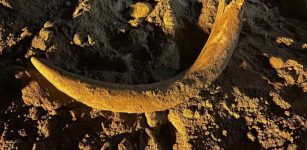 Large Mammoth Tusk And Bones Buried For Thousands Of Years Found In North Dakota
News | Jan 8, 2024
Large Mammoth Tusk And Bones Buried For Thousands Of Years Found In North Dakota
News | Jan 8, 2024 -
 Vatican Secrets – Dangerous Knowledge And Invention That Could Alter History
Featured Stories | Dec 14, 2018
Vatican Secrets – Dangerous Knowledge And Invention That Could Alter History
Featured Stories | Dec 14, 2018 -
 On This Day In History: Magna Carta Sealed By King John Of England – On June 15, 1215
News | Jun 15, 2016
On This Day In History: Magna Carta Sealed By King John Of England – On June 15, 1215
News | Jun 15, 2016 -
 Secret Passageways And Caves Beneath UK’s City Of Nottingham
Featured Stories | Feb 14, 2023
Secret Passageways And Caves Beneath UK’s City Of Nottingham
Featured Stories | Feb 14, 2023 -
 Manticore – Legendary Persian Sphinx Whose Existence Is Still Discussed
Featured Stories | Jun 4, 2019
Manticore – Legendary Persian Sphinx Whose Existence Is Still Discussed
Featured Stories | Jun 4, 2019 -
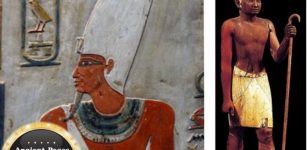 Mysterious Ancient Rulers With Elongated Skulls – Who Were They Really?
Featured Stories | May 19, 2015
Mysterious Ancient Rulers With Elongated Skulls – Who Were They Really?
Featured Stories | May 19, 2015 -
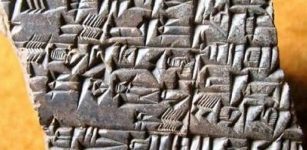 Sumerian Clay Brick With Inscription In Honor Of God Enki Returns To Iraq
Archaeology | May 5, 2015
Sumerian Clay Brick With Inscription In Honor Of God Enki Returns To Iraq
Archaeology | May 5, 2015 -
 How King Arthur Became One Of The Most Pervasive Legends Of All Time
Featured Stories | Feb 12, 2017
How King Arthur Became One Of The Most Pervasive Legends Of All Time
Featured Stories | Feb 12, 2017 -
 Noppera-bo: Odd Intimidating Human-Like Faceless Yokai In Japanese Folklore
Japanese Mythology | Jul 23, 2024
Noppera-bo: Odd Intimidating Human-Like Faceless Yokai In Japanese Folklore
Japanese Mythology | Jul 23, 2024 -
 Metal Artifacts In Southeast Asia Archaeological Theory – Challenged
Archaeology | Jul 31, 2021
Metal Artifacts In Southeast Asia Archaeological Theory – Challenged
Archaeology | Jul 31, 2021 -
 Falerii Novi – Huge Ancient Underground Roman City Reveals Its Secrets
Featured Stories | Jun 8, 2022
Falerii Novi – Huge Ancient Underground Roman City Reveals Its Secrets
Featured Stories | Jun 8, 2022 -
 Legend Of The Four Dragons That Disobeyed The Jade Emperor And Gave China Water
Chinese Mythology | Feb 22, 2019
Legend Of The Four Dragons That Disobeyed The Jade Emperor And Gave China Water
Chinese Mythology | Feb 22, 2019 -
 Prehistoric Hi-Tech Nanospirals Barely Visible To The Naked Eye: Still Remain An Unsolved Mystery
Ancient Technology | Mar 4, 2014
Prehistoric Hi-Tech Nanospirals Barely Visible To The Naked Eye: Still Remain An Unsolved Mystery
Ancient Technology | Mar 4, 2014 -
 Revealing Relatives In Ancient DNA With Unprecedented Precision
DNA | Dec 22, 2023
Revealing Relatives In Ancient DNA With Unprecedented Precision
DNA | Dec 22, 2023 -
 Mystery Of The Thirteen Towers Of Chankillo – Oldest ‘Full-Service Observatory’ In The Western Hemisphere
Featured Stories | Nov 6, 2018
Mystery Of The Thirteen Towers Of Chankillo – Oldest ‘Full-Service Observatory’ In The Western Hemisphere
Featured Stories | Nov 6, 2018 -
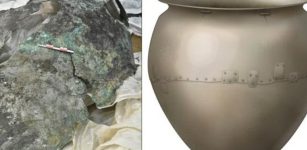 Bronze Age Metal Cauldrons Show What Ancient People Ate
Archaeology | Aug 19, 2023
Bronze Age Metal Cauldrons Show What Ancient People Ate
Archaeology | Aug 19, 2023 -
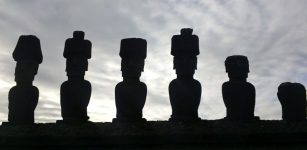 Ancient DNA Sheds New Light On Easter Island Mystery
Archaeology | Oct 13, 2017
Ancient DNA Sheds New Light On Easter Island Mystery
Archaeology | Oct 13, 2017 -
 Mysterious And Unexplained Encounter With Unusual Tiny Beings In Italy – The Thing – Part 1
Featured Stories | Jan 15, 2022
Mysterious And Unexplained Encounter With Unusual Tiny Beings In Italy – The Thing – Part 1
Featured Stories | Jan 15, 2022 -
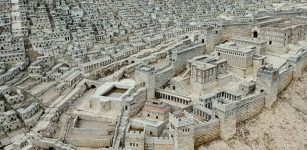 Early City Planning In The Kingdom Of Judah Examined
Archaeology | Jul 5, 2023
Early City Planning In The Kingdom Of Judah Examined
Archaeology | Jul 5, 2023


